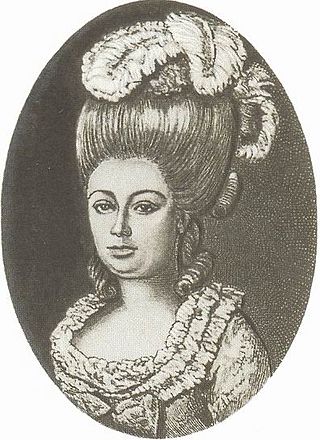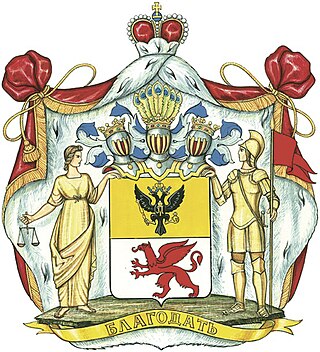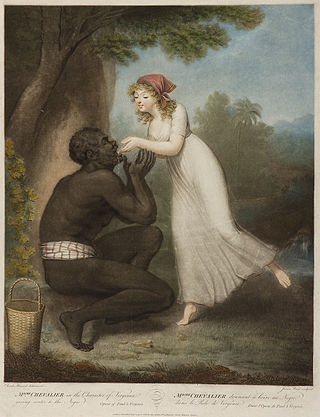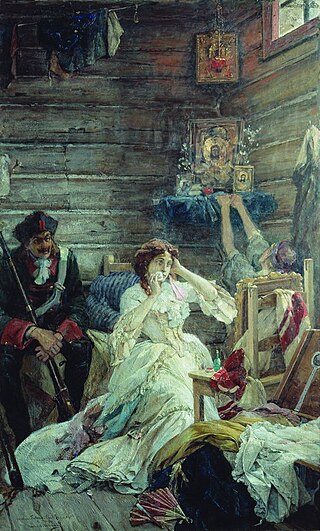
Catherine IAlekseyevna Mikhailova; born Marta Samuilovna Skavronskaya; 15 April [O.S. 5 April] 1684 – 17 May [O.S. 6 May] 1727) was the second wife and Empress consort of Peter the Great, whom she succeeded as Empress of Russia, ruling from 1725 until her death in 1727.

Count Alexei (Alexey) Grigoryevich Orlov-Chesmensky was a Russian soldier, general-in-chief, general admiral and statesman, who rose to prominence during the reign of Catherine the Great. His joint victory with Grigory Spiridov and Samuel Greig in the Battle of Chesma put him in the ranks of the outstanding Russian military commanders of all time; and although he lacked naval experience, he was the only authority in those circumstances who could ensure proper co-ordination of action.

Gatchina is a town and the administrative center of Gatchinsky District in Leningrad Oblast, Russia. It lies 45 kilometers (28 mi) south-south-west of St. Petersburg, along the E95 highway which links Saint Petersburg and Pskov. Population: 92,937 (2010 Census); 88,420 (2002 Census); 79,714 (1989 Soviet census).
Okolnichy was an old Russian court official position. According to the Brockhaus and Efron Encyclopedic Dictionary, directives on the position of okolnichy date back to the 14th century. Judging by the Muscovite records from the 16th and 17th centuries, okolnichy were entrusted with the same business in administration as boyars, with the only difference that they were placed second to boyars everywhere. While lower than boyars, it was one of the highest ranks close to the tsar in the courts of the Moscow rulers until the government reform undertaken by Peter the Great.
"Mary Hamilton", or "The Fower Maries", is a common name for a well-known sixteenth-century ballad from Scotland based on an apparently fictional incident about a lady-in-waiting to a Queen of Scotland. It is Child Ballad 173 and Roud 79.
Willem Mons was private secretary to Catherine I of Russia.

Countess Elizaveta Romanovna Vorontsova was a Russian noblewoman and lady-in-waiting. She was a mistress of Emperor Peter III of Russia. During their affair, rumors suggested that Peter had intentions of divorcing his wife Catherine in order to marry Vorontsova.

Marfa Matveyevna Apraksina was a Tsarina of Russia and the second spouse of Tsar Feodor III of Russia.

Countess Darya Petrovna Saltykova was a Russian lady-in-waiting, socialite and noble and Dame of the Order of St. Catherine's first degree. She was the sister of the lady in waiting Princess Nataliya Petrovna Chernysheva, and in 1769 married to Field Marshal Count Ivan Petrovich Saltykov.

Maria Savvishna Perekusikhina, was a Russian memoirist, a maid of honour of Empress Catherine the Great of Russia. She was a close friend and confidant of Catherine and quite influential.

Countess Maria Andreyevna Rumyantseva née Matveyeva (1699–1788) was a Russian lady in waiting and alleged royal mistress of Tsar Peter the Great.

Avdotya Ivanovna Chernysheva was a Russian noble and lady in waiting. She was a royal mistress of Tsar Peter the Great of Russia. She was the daughter of Prince Ivan Ivanovitch Rzyevskiy and Daria Gavrilovna and in 1710 married Prince Grigory Chernyshev (1672–1745).

Freemasonry in Russia started in the 18th century and has continued to the present day. Russian Freemasonry pursue humanistic and educational purposes, but more attention is given to ethical issues. It was a spiritual community of people united in an effort to contribute to the prosperity of the Motherland and the enlightenment of the people living in it.

Maria Alexeevna Kleschar-Samohvalova was a Soviet Russian painter and graphic artist and a member of the Saint Petersburg Union of Artists, who lived and worked in Leningrad - Petersburg. She is regarded as a representative of the Leningrad school of painting.

The House of Lopukhin was an old Russian noble family, most influential during the Russian Empire, forming one of the branches of the Sorokoumov-Glebov family.

Louise Chevalier, was a French actress and opera singer. She was active in Russia in the French theater troupe of her spouse, the ballet dancer and playwright Chevalier, from 1797 until 1801.

The Gamoltov family is the name of Russian noble family of Scottish origin, descend from Petr Gamoltov-Hamilton, an officer in Russian service since 1610. He had several granddaughters. The first, Eudoxia, was an aunt of Natalya Kirillovna Naryshkina the Tsaritsa of Russia from 1671 to 1676 as the second spouse of Tsar Alexei I of Russia, and regent of Russia as the mother of Tsar Peter the Great in 1682. The second was a wife of Artamon Matveyev.

Count Pyotr Grigoryevich Chernyshev was a Russian Imperial nobleman, diplomat, privy counsellor, chamberlain, and senator.

Princess Maria Yuryevna Cherkassky née Trubetskaya, was a Russian noblewoman and an Imperial courtier.
















